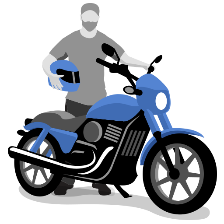Advertisement
Motorcycles Values
Select a Motorcycle
Or Select a Category
Shop for Your Next Motorcycle

Find a great deal on a motorcycle for sale near you!
About Kelley Blue Book Motorcycle Values
For over 40 years, Kelley Blue Book has been The Trusted Resource® for motorcycle values and pricing. Kelley Blue Book regularly updates its motorcycle values to give consumers the pricing information they need.
Popular Makes
Advertisement

